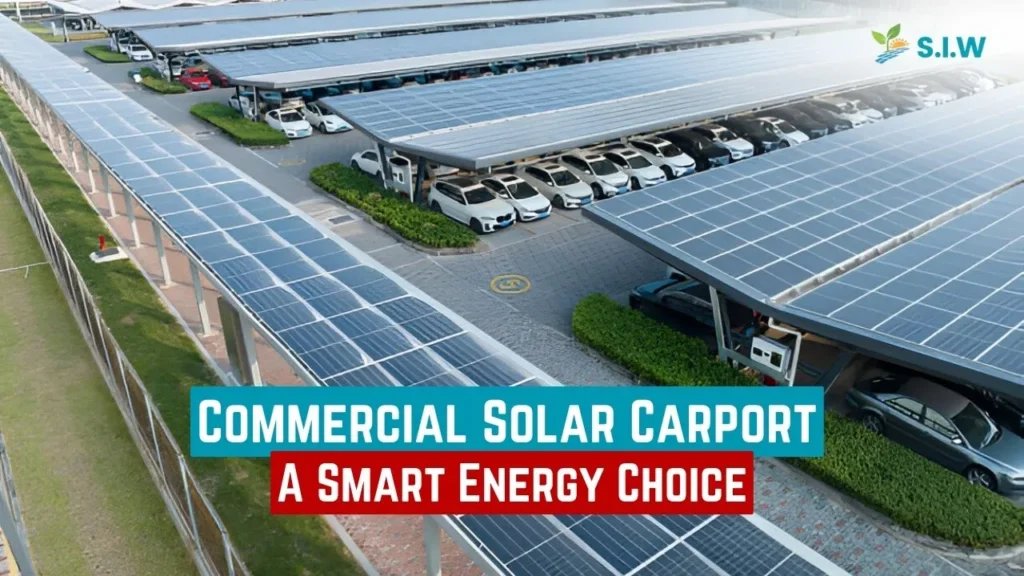In the evolving landscape of sustainable energy solutions, commercial solar carports are making significant waves. These structures do more than just provide parking—they offer businesses an innovative way to reduce electricity costs, lower carbon footprints, and improve property value. The commercial solar carport industry has become a key component in helping organizations achieve both sustainability and economic benefits. For companies, adopting this approach is not just about being eco-friendly; it’s a sound financial decision with potential for substantial returns.
What Is a Commercial Solar Carport?
A commercial solar carport is a specialized structure installed over parking spaces and covered with solar panels. These carports serve dual purposes: they protect parked vehicles from the elements and generate clean, renewable energy. Solar carports can vary in size and complexity, catering to businesses and organizations of all sizes, from small commercial establishments to large corporate campuses.
Advantages of Installing a Commercial Solar Carport
Environmental Impact
Using commercial solar carports significantly contributes to sustainability efforts. By generating renewable energy, solar carports reduce reliance on fossil fuels, helping lower greenhouse gas emissions and promote cleaner air. This environmental impact aligns with corporate social responsibility goals, attracting eco-conscious clients and customers.
Financial Savings
The economic benefits of solar carports are substantial. Businesses can reduce utility costs by generating their own power. Additionally, incentives and tax benefits are often available for renewable energy projects, making the investment in solar carports more attractive. Over time, these savings can significantly offset the initial installation costs.
Enhanced Brand Image
Adopting a commercial solar carport system elevates a company’s brand, aligning it with sustainability and forward-thinking values. In an era where consumers increasingly support eco-friendly brands, such an investment can enhance a business’s reputation and attract new clientele.
How Do Solar Carports Work?
Solar carports harness sunlight through photovoltaic (PV) panels mounted on the carport’s roof. These panels convert solar energy into electricity, which can be used directly to power a facility or stored for later use. Most commercial solar carports are also tied to the grid, allowing businesses to benefit from net metering. This means any excess energy generated can be sent back to the grid, resulting in credits on the company’s energy bill.
Key Components of a Solar Carport System
- Solar Panels: High-efficiency PV panels that capture sunlight.
- Inverters: Convert the DC electricity generated by the panels into AC, which powers most electrical systems.
- Mounting System: The structural framework that holds the solar panels securely above the parking area.
- Electrical Components: These include cables, wiring, and connectors, ensuring safe and efficient energy flow.
- Monitoring Systems: Track energy production, allowing businesses to monitor and optimize their solar generation.
Types of Commercial Solar Carports
Single-Row Carports
Single-row carports are ideal for smaller parking lots or narrow spaces. They’re often used by smaller businesses or as a supplemental addition to an existing energy strategy.
Double-Row Carports
Double-row structures are typically implemented in larger lots, with solar panels covering two rows of parking spaces. This layout is more cost-effective for high-volume installations, maximizing energy output per square foot.
Custom-Built Carports
For companies with unique space or energy requirements, custom-built solar carports can be designed. Custom designs allow for greater flexibility in accommodating both aesthetic and functional needs.
Cost-Benefit Analysis of Solar Carports
While the upfront cost of a solar carport installation can be significant, the long-term savings usually make up for the initial investment. Key factors in the cost-benefit analysis include:
- Initial Installation Costs: Varies based on size and panel quality.
- Energy Savings: Potential reductions in utility bills.
- Government Incentives: Rebates and tax credits can significantly reduce costs.
- Property Value Increase: Solar installations can enhance property value, a boon for resale or leasing options.
Choosing the Right Solar Panels for Carports
Selecting the right panels is crucial for maximizing energy generation. High-efficiency monocrystalline panels are often preferred for commercial solar carports due to their superior energy output per square foot. Additionally, durable and weather-resistant materials are necessary to withstand exposure over time.
Maintenance Requirements for Solar Carports
Maintaining solar carports is generally low-cost and straightforward. Regular inspections and cleaning ensure the panels continue to operate at peak efficiency. Businesses may also want to consider maintenance contracts with the installation company for peace of mind and long-term savings.
Real-Life Examples and Case Studies
Companies worldwide are adopting solar carports to enhance sustainability. For instance, Apple’s Cupertino headquarters uses solar canopies to power operations, reflecting the tech giant’s commitment to renewable energy. Similarly, Toyota’s headquarters has solar carports, which generate a substantial portion of the campus’s energy, showcasing how large corporations can lead the charge toward sustainability.
Final Thoughts
A commercial solar carport is more than just a parking structure—it’s a smart investment for a greener future. By combining energy savings, environmental impact, and a boost in corporate image, solar carports are proving to be an essential part of modern business infrastructure. As more companies realize the benefits, commercial solar carports will become a common sight, turning parking lots into power-generating assets.








